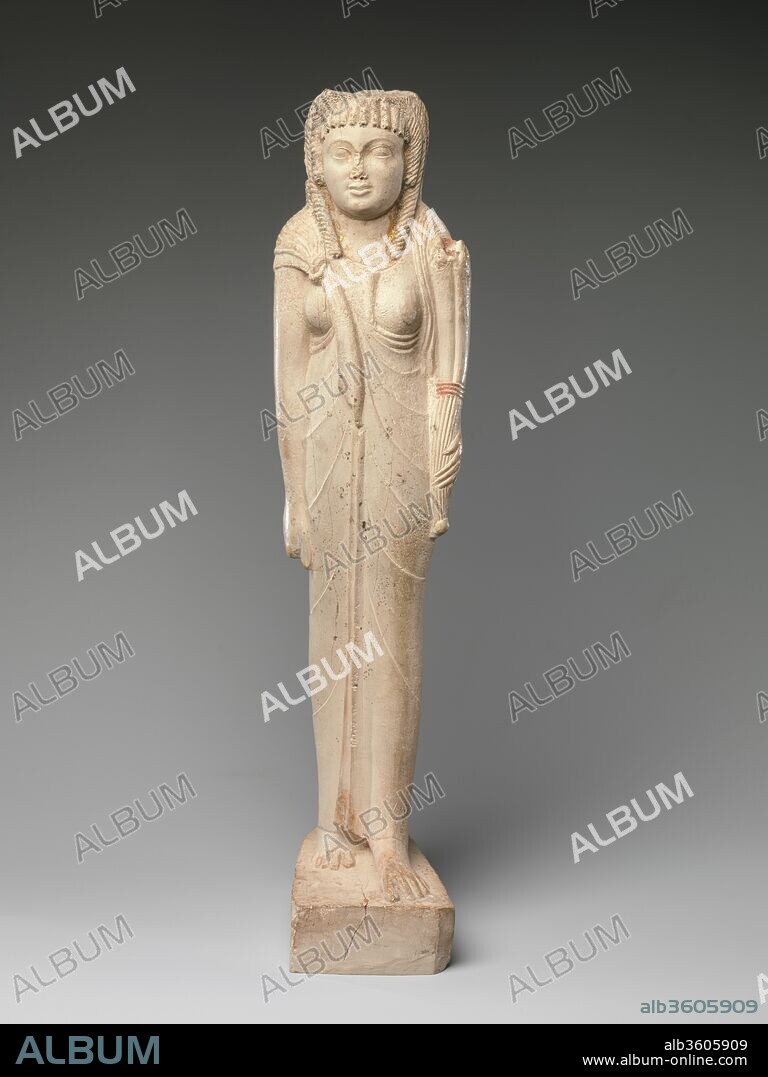alb3605909
Statuette of Arsinoe II for her Posthumous Cult

|
Añadir a otro lightbox |
|
Añadir a otro lightbox |



¿Ya tienes cuenta? Iniciar sesión
¿No tienes cuenta? Regístrate
Compra esta imagen.
Selecciona el uso:

Título:
Statuette of Arsinoe II for her Posthumous Cult
Descripción:
Ver traducción automática
Statuette of Arsinoe II for her Posthumous Cult. Dimensions: H. 38.7 cm (15 1/4 in); W. 9.6 cm (3 3/4 in); D. 13.2 cm (5 3/16 in). Date: ca. 150-100 B.C..
The inscription on the back of this figure refers to Queen Arsinoe II as a goddess, indicating it was made after 270 B.C. when her cult was established at the time of her death in by her brother and husband, Ptolemy II. Gilding indicating divinity once covered her face, and traces still remain at the edges of her neckline.
While the overall frontal pose and disposition of the limbs in this small statue follows Egyptian traditions, the cornucopia the queen holds is a Greek divine attribute, and her corkscrew are strongly associated with Hellenistic traditions in Egypt. Features of the depiction - the small Cupid's bow mouth and the large rounded eyes - are also elements from Greek style. Stylistic comparisons indicate this statue was created in the second half of the second century B.C.
Arsinoe's deification is part of the phenomenon of ruler cults in the Hellenistic world established to honor leaders, sometimes even while living; statues of the deified ruler might be placed in the temples of other gods. The importance of native goddesses like Isis and Hathor might have encouraged the Ptolemies to establish a prominent queen. Worship of Egyptian pharaonic period queens is rather rare, although there are notable exceptions such as Ahmose-Nefertari.
Técnica/material:
Limestone, paint, gold leaf
Periodo:
PTOLEMAIC PERIOD
Museo:
Metropolitan Museum of Art, New York, USA
Crédito:
Album / Metropolitan Museum of Art, NY
Autorizaciones:
Modelo: No - Propiedad: No
¿Preguntas relacionadas con los derechos?
¿Preguntas relacionadas con los derechos?
Tamaño imagen:
3150 x 4200 px | 37.9 MB
Tamaño impresión:
26.7 x 35.6 cm | 10.5 x 14.0 in (300 dpi)
Palabras clave:
AFRICA • ARTE EGIPCIO • CALIZA NEGRA • EGIPTO • ESCULTURA • ESTATUAS • ESTATUILLA • FROM EGYPT • METAL • METROPOLITAN MUSEUM OF ART, NEW YORK, USA • ORO BATIDO • ORO • PAN DE ORO
 Pinterest
Pinterest Twitter
Twitter Facebook
Facebook Copiar enlace
Copiar enlace Email
Email
